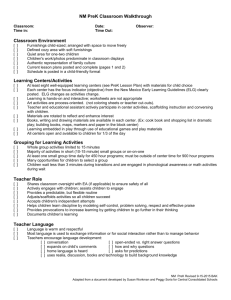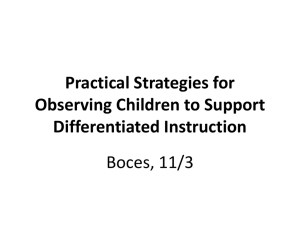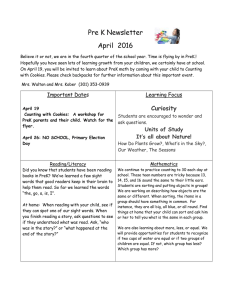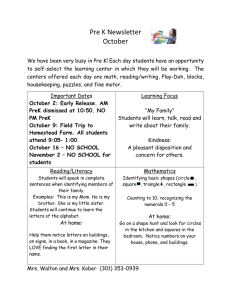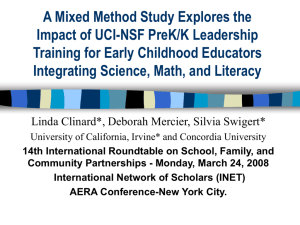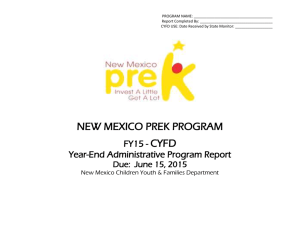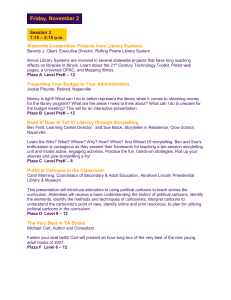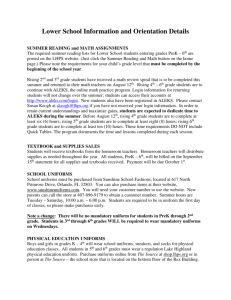Pre-K Classroom Walk Through - Center for Development and
advertisement
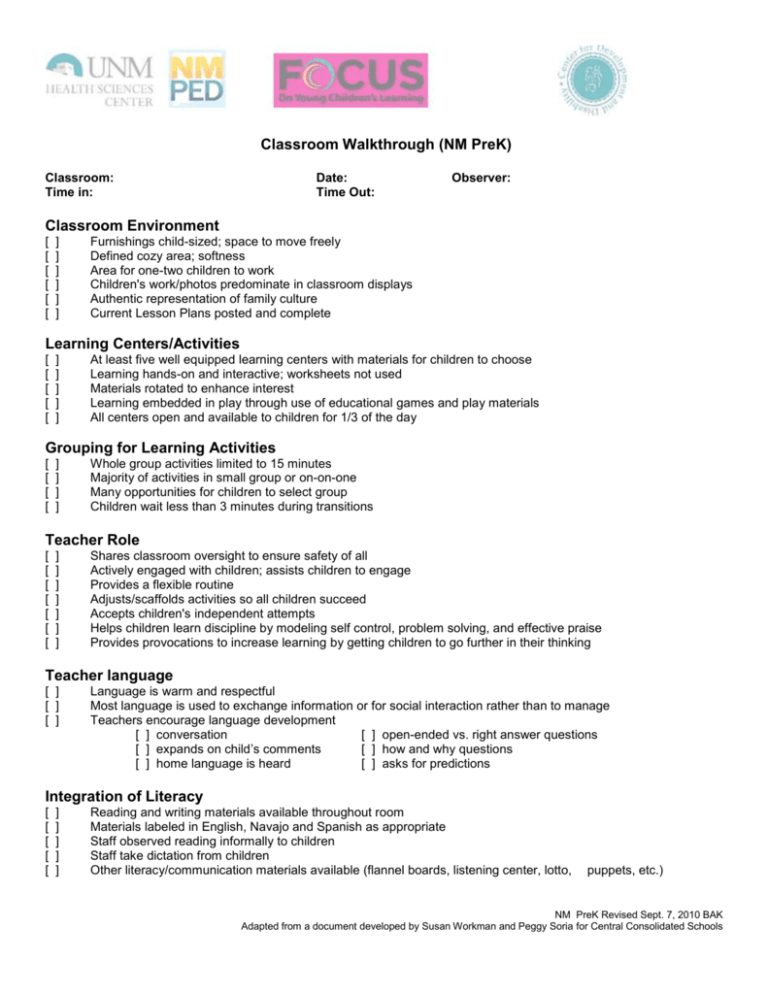
Classroom Walkthrough (NM PreK) Classroom: Time in: Date: Time Out: Observer: Classroom Environment [ [ [ [ [ [ ] ] ] ] ] ] Furnishings child-sized; space to move freely Defined cozy area; softness Area for one-two children to work Children's work/photos predominate in classroom displays Authentic representation of family culture Current Lesson Plans posted and complete Learning Centers/Activities [ [ [ [ [ ] ] ] ] ] At least five well equipped learning centers with materials for children to choose Learning hands-on and interactive; worksheets not used Materials rotated to enhance interest Learning embedded in play through use of educational games and play materials All centers open and available to children for 1/3 of the day Grouping for Learning Activities [ [ [ [ ] ] ] ] Whole group activities limited to 15 minutes Majority of activities in small group or on-on-one Many opportunities for children to select group Children wait less than 3 minutes during transitions Teacher Role [ [ [ [ [ [ [ ] ] ] ] ] ] ] Shares classroom oversight to ensure safety of all Actively engaged with children; assists children to engage Provides a flexible routine Adjusts/scaffolds activities so all children succeed Accepts children's independent attempts Helps children learn discipline by modeling self control, problem solving, and effective praise Provides provocations to increase learning by getting children to go further in their thinking Teacher language [ ] [ ] [ ] Language is warm and respectful Most language is used to exchange information or for social interaction rather than to manage Teachers encourage language development [ ] conversation [ ] open-ended vs. right answer questions [ ] expands on child’s comments [ ] how and why questions [ ] home language is heard [ ] asks for predictions Integration of Literacy [ [ [ [ [ ] ] ] ] ] Reading and writing materials available throughout room Materials labeled in English, Navajo and Spanish as appropriate Staff observed reading informally to children Staff take dictation from children Other literacy/communication materials available (flannel boards, listening center, lotto, puppets, etc.) NM PreK Revised Sept. 7, 2010 BAK Adapted from a document developed by Susan Workman and Peggy Soria for Central Consolidated Schools Integration of Numeracy [ ] [ ] [ ] Materials for counting, measuring, comparing, ordering and sorting, size and shape, written numbers available throughout room Materials are organized and accessible 1/3 of day Daily activities and routines promote numeracy learning Clarifications/Rationale Classroom environment: The PreK classroom should provide a comfortable transition from home to school. A cozy area is a place where children can relax away from more active play, such as a comfortable reading area; softness includes puppets, cushions, pillows, etc. Family culture can be represented by items familiar to children present in dramatic play, family photos, favorite books or tapes of songs from home, etc. Learning center possibilities include reading, dramatic play, art, blocks, sand/water, writing, manipulatives, science, music, computer Grouping for instruction: Transitions Rather than having children wait to line up, teachers use this time for counting, rhymes, songs, etc. to keep children engaged. Teacher's role: Accepts independent attempts Rather than correcting children's work or doing it for them to produce a product, teachers encourage children to complete projects by their own efforts. Teacher language: Expansion Teachers model slightly more complex language than that used by a child, for example if a child points and says "Truck", the teacher might say, "Yes that is a big, red fire truck." Literacy: Informal reading to an individual child or a small group occurs daily Dictation involves writing down children's comments for them to see on art work, class charts, class books, etc. NM PreK Revised Sept. 7, 2010 BAK Adapted from a document developed by Susan Workman and Peggy Soria for Central Consolidated Schools
